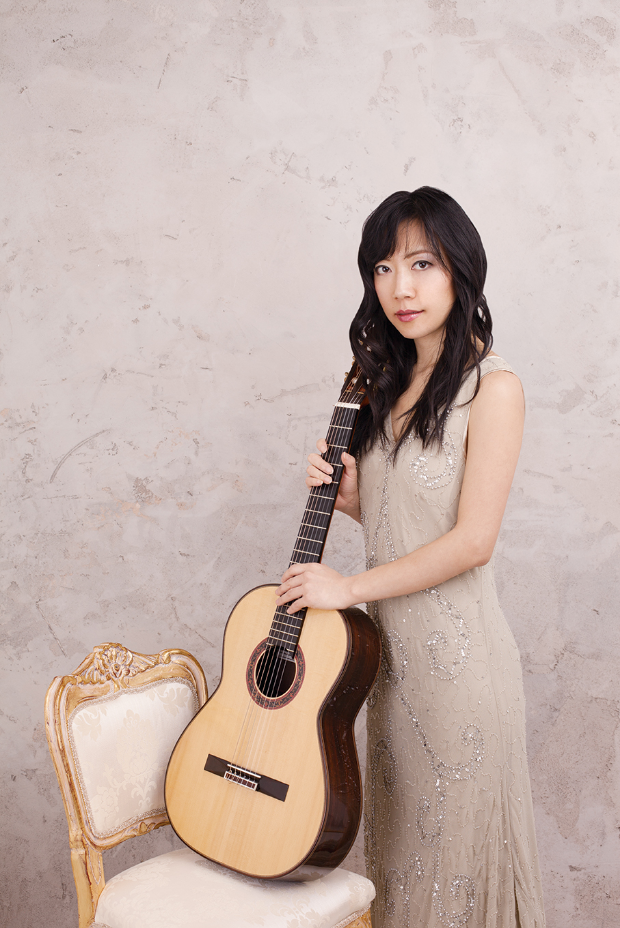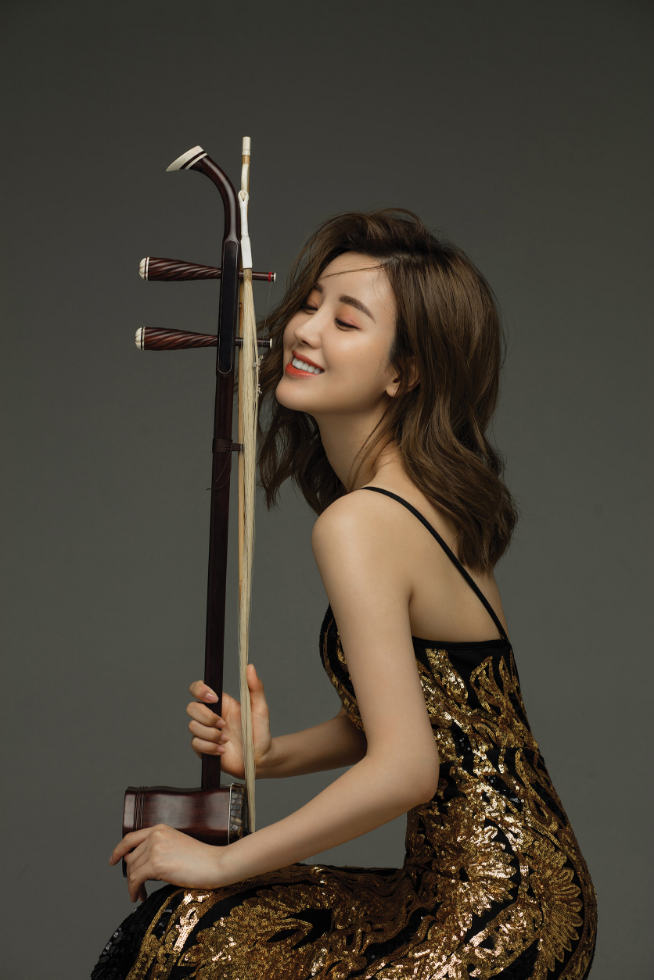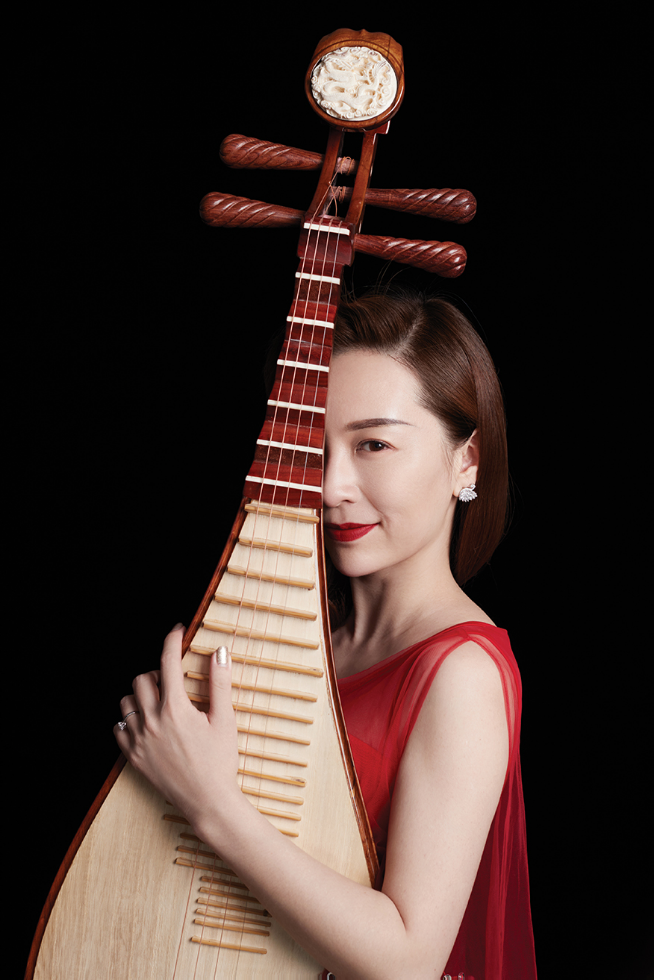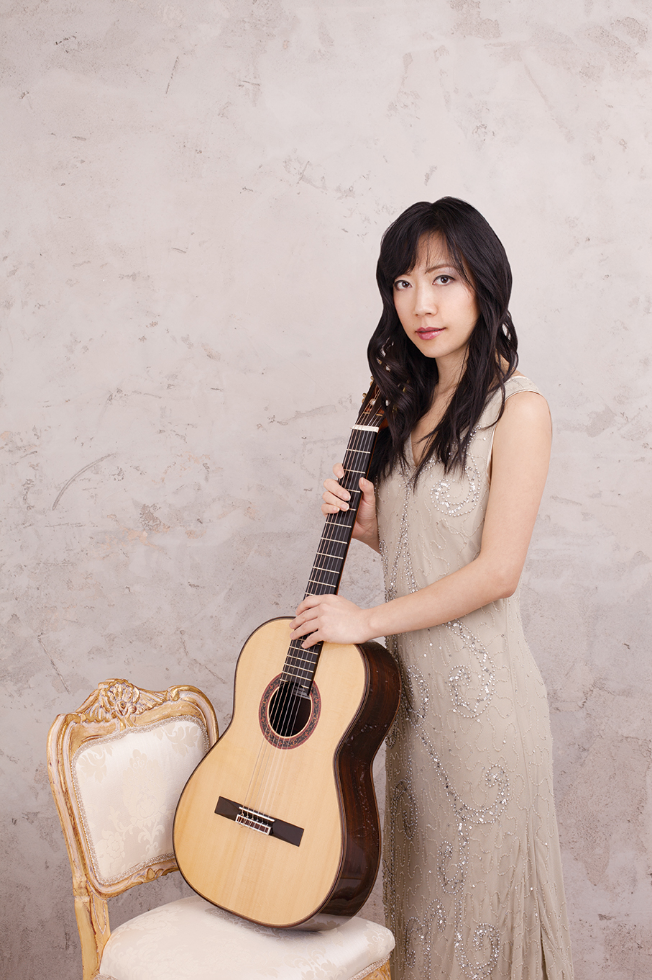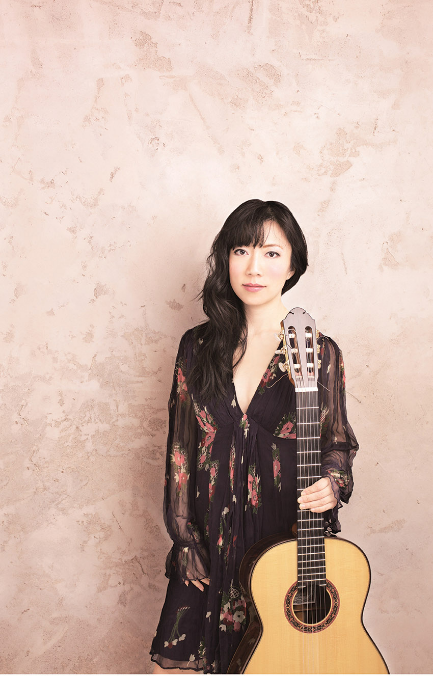
Sketches of China
breaks new ground, with new arrangements
Yang Xuefei will finally delight our audience at CCM’s Grand Auditorium with a wide range of technically demanding and exciting tunes. Reintroducing the virtuosic player after last year’s concert cancellation, we are republishing Joanna Lee’s insightful feature overviewing the work of an artist considered amongst the most gifted, contemporary female guitarists in the world.
Celebrated Chinese guitarist Yang Xuefei has won accolades for the past two decades interpreting Baroque, Spanish and Latin American classics. In this concert, she collaborates with Sun Ying (pipa) and Lu Yiwen (erhu), expanding her horizon, invoking the Chinese spirit, and more.
In the 20th century, the rise of popular and folk music brought the guitar—newly ubiquitous on stage and screen—into the family home and university dorm room as well. When the Beatles toured the world (they even appeared so closed to us, in Hong Kong’s Princess Theatre in 1964) you could feel the adrenaline rush in the crowds. The acoustic guitar felt a similar boost during the folk music movement, when “campus folk songs” circulated in Asia for decades. Guitar sales certainly skyrocketed from then on.
The modern guitar, however, is merely the highest-profile member of a huge family of instruments ranging from the Renaissance lute and Arabic oud to the American banjo and Chinese pipa. Despite differences in shape, size and materials involved, they all share similar traits: the player embraces the instrument, its resonant cavity resting on the player’s abdomen; while the left hand travels up and down the fingerboard, the right hand plucks the strings.
Perhaps the most identifiable “guitar sound” is the strumming of chords, creating rich sonorities along the way. But the guitar is also a melodic instrument, versatile as a solo and accompanying instrument. The above description, in fact, also fits the pipa perfectly.
Can you imagine the sonorities if we combine guitar and pipa? In this upcoming concert, Yang Xuefei includes three diverse works for such a duet, each piece accentuating both their similarities and contrasts. Three Variations on Plum Blossom has roots in ancient Chinese guqin (zither) tablature, while a special arrangement of Béla Bartók’s Romanian Folk Dances, heavily drawing upon the instruments’ plucked sonorities, reaches back to the original Transylvanian folk materials that the composer collected before the First World War. It is also propitious that the guitar-pipa duet will perform a contemporary work specifically written for the combination: Beijing-based, Singapore-born composer Lim Yi’s recent Flamenco Dance pays homage to the iconic Spanish tradition while reminding us how national styles now meld together in our 21st century global village.
Taking the initiative to transcribe and arrange
In an exclusive interview for this article, Yang Xuefei describes her own artistic path not only as a performer but also as an arranger in light of two decades as an international touring artist. Her desire to promote Chinese works for her instrument literally began from the very launch of her career. The flexibility of using different instrument combinations in any given work, she claims, can be traced to J.S. Bach. The measure of success, she adds, is “how you get to the spirit of the music.” Yang is driven by this singular goal: to share Chinese music she’s loved since her youth with guitar aficionados worldwide.
This programme includes Chinese music both ancient and modern transcribed for solo guitar (sometimes with pipa and erhu). The most recent is Xu Changjun’s Sword Dance, a showpiece originally for Chinese liuqin (a four-stringed pear-shaped lute, much like a pipa in miniature) inspired by an ancient poem dating from the Tang dynasty. The ancient tune A Moonlit Night on the Spring River is most often rendered by the pipa, though the piece’s affinity for the guitar brings Yang’s set of transcriptions full circle in capturing the music’s original spirit while adding the performer’s unique artistic sensibility.
Throughout the last century, Chinese music went through a true revolution in incorporating Western elements, giving birth to many beloved works utilising full Western orchestration. Of these classics, none can match the overnight sensation and longstanding success of The Butterfly Lovers Concerto which premiered in 1959 on the occasion of the tenth anniversary of the founding of the People’s Republic of China. Originally a concerto for violin, the piece has maintained its original grandeur through many adaptations for a wide range of other solo instruments, but Yang’s arrangement for guitar and erhu preserves the beauty of the romantic tragedy through lyrical excerpts in a more chamber-like setting. To her, the erhu is an even more “sensitive” instrument than the violin, able to subsume virtuosity in service of the music. Since the main melody of The Butterfly Lovers derives from Yue opera, the erhu harks directly to that folk tradition. Two other works derived from orchestral pieces—Yao Dance (arranged here for solo guitar) and Silver Clouds Chasing the Moon (for guitar and erhu)—combine graceful melodies with mesmerising rhythmic lilt, extending the palette of Chinese music with added colour and spirit.
What Xuefei Yang holds dear is the essence and spirit of music that moves the soul, qualities that span time periods and geographical areas. To her, transcriptions and arrangements must also contribute something to enrich the original work, otherwise the effort is fruitless. Since the guitar can often create the most intimate encounters with single notes and harmonics—and other times summon impassioned drama with thunderous chords—Yang has found an appropriate vehicle for her creativity. Being a collaborative artist, she also brings others into the fold, opening doors to an ever-expanding musical horizon.
Putting a musical programme together is essentially planning for the audience a pleasurable yet soulful journey. We’re in for a treat of hidden treasures: after appreciating the earthy gusto of flamenco-inspired music (solo works by Juan Martín), we come face to face with a special homage to the Andalusian musical form in Lim Yi’s Flamenco Dance. Each piece of music is not only supported by back stories, but also by generations of artists’ heartfelt devotion to their peers and predecessors.
East and West meld together,
forming new alliances
Yang Xuefei is one of the world’s finest guitarists and the first-ever Chinese musician to have launched an international career with this instrument. The UK music magazine, Classic FM, named Yang Xuefei as one of the best 100 musicians of our time, and in 2019 she was picked for the third time to be on the cover of the Classical Guitar Magazine. Now based in the UK, Yang is widely recognized as a soloist and chamber musician. Having performed in more than 50 countries in America, Europe and Asia, she collaborated with prestigious artists like tenor Ian Bostridge and played with some of the world’s leading orchestras. Since 2015, Yang has been the Artistic Director of Changsha International Guitar Festival.
Lu Yiwen is a widely known erhu player in China and a leading artist in the field. She is the director of the Erhu Committee at the China Nationalities Orchestra Society and is currently teaching at the Shanghai Conservatory. Over the years Lu received numerous major awards and in 2018 was named New Musician of the Year. In 2019, Lu won a scholarship from the National Arts Foundation for Youth and performed a solo concert “Chinese Melody - Dialogue Between Erhu and Symphony”. In 2020, she toured with her Erhu Recital around Mainland China, to great critical acclaim.
